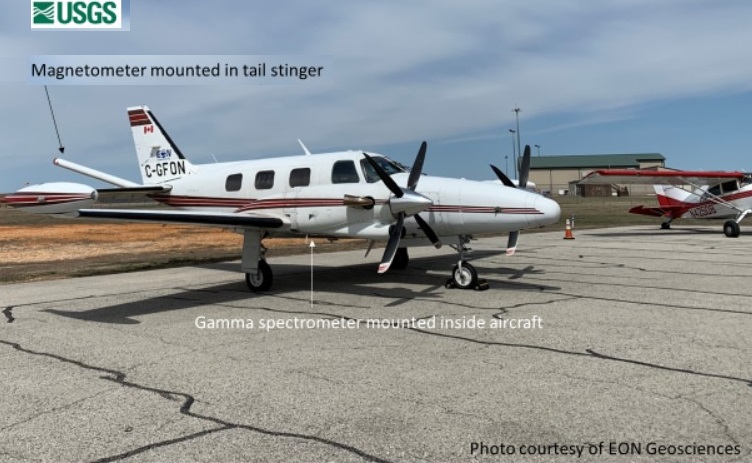Low-level airplane surveys to image geology of region

RESTON, Va. — Low-level airplane flights are planned over a broad region in Missouri, Kansas, and Arkansas to image geology using airborne geophysical technology.
The survey will be conducted from early October for approximately 8 months, weather and wildfire restrictions permitting.
Local counties covered in Missouri include Barry, Barton, Bates, Cedar, Christian, Greene, Jasper, McDonald, Newton and Vernon with 52 counties included statewide.
Kansas counties include Allen, Anderson, Bourbon, Cherokee, Franklin, Johnson, Labette, and Neosho; and Arkansas counties of Benton, Carroll, Crawford, Franklin, Madison, and Washington.

The purpose of the survey is to provide images that expand the fundamental knowledge of geology underpinning the Ozark Plateau physiographic region. By imaging surface and concealed geology, data from this survey will facilitate geologic mapping related to mineral resource potential within the Paleozoic sedimentary section, as well as provide insight into the underlying structures of the Precambrian crystalline basement.
This region is renowned for its world-class Mississippi Valley-type (MVT) deposits and has an extensive mining history associated with a variety of mineral commodities.
The flights will be based out of Rolla National Airport (KVIH), West Plains Regional Airport (KUNO), Springfield-Branson National Airport (KSGF), and Clinton Memorial Airport (KGLY) in Missouri, as well as Rogers Municipal Airport (KROG) in Arkansas, and Atkinson Municipal Airport (KPTS) in Kansas. The flights could shift with little warning to other parts of the survey area as necessitated by adverse flying conditions.
The airplanes will fly along pre-planned flight paths relatively low to the ground at about 260 feet (80 meters) above the surface. The ground clearance will be increased to 1,000 feet (300+ meters) over populated areas and will comply with Federal Aviation Administration (FAA) regulations. Flights will follow north-south lines spaced about 980 feet (300 meters) apart and east-west lines about 9,840 feet (3 km) apart.
The survey will use Piper Navajo aircraft equipped with an elongated “stinger” mounted to the back of the aircraft. Instruments in the stinger and inside the cabin will measure variations in the Earth’s magnetic field and natural low-level gamma energy created by different rock types.
The scientific instruments on the planes are completely passive with no emissions that pose a risk to humans, animals, or plant life. No photography or video data will be collected. The data collected will be made freely available to the public once complete. The aircraft will be flown by experienced pilots who are specially trained and approved for low-level flying. The company works with the FAA to ensure flights are safe and in accordance with U.S. law. The surveys will be conducted during daylight hours only.
The Ozark Plateau survey will connect adjacent high-resolution airborne magnetic and radiometric surveys from Southeast Missouri and Western Illinois collected from 2018 to 2019, Central Arkansas-Southern Missouri collected from 2022 to 2023, and Northwest Arkansas from 2019 to 2020, providing continuous high-resolution coverage across the southern Midcontinent.
The new geophysical data will be processed to develop high-resolution three-dimensional representations of bedrock composition and structure to depths more than 3,280 feet (1 kilometer) below the surface.
The 3D models and maps are important for improving our understanding of critical mineral resource potential, water resources, groundwater pathways near legacy mining areas, parameters for infrastructure and land use planning, and potential risks of naturally occurring radon.
The survey fits into a broader effort by the USGS, the Geological Surveys of Missouri, Kansas, and Arkansas, and many other state geological surveys and partners, including private companies, academics, and state and federal agencies to modernize our understanding of the Nation’s fundamental geologic framework and knowledge of mineral resources. This effort is known as the Earth Mapping Resources Initiative, and it includes airborne geophysical surveys like this one, geochemical reconnaissance surveys, topographic mapping using LiDAR technology, hyperspectral surveys, and geologic mapping projects.
The USGS has contracted Woolpert Inc., who has subcontracted EON Geosciences Inc., to collect the data.



